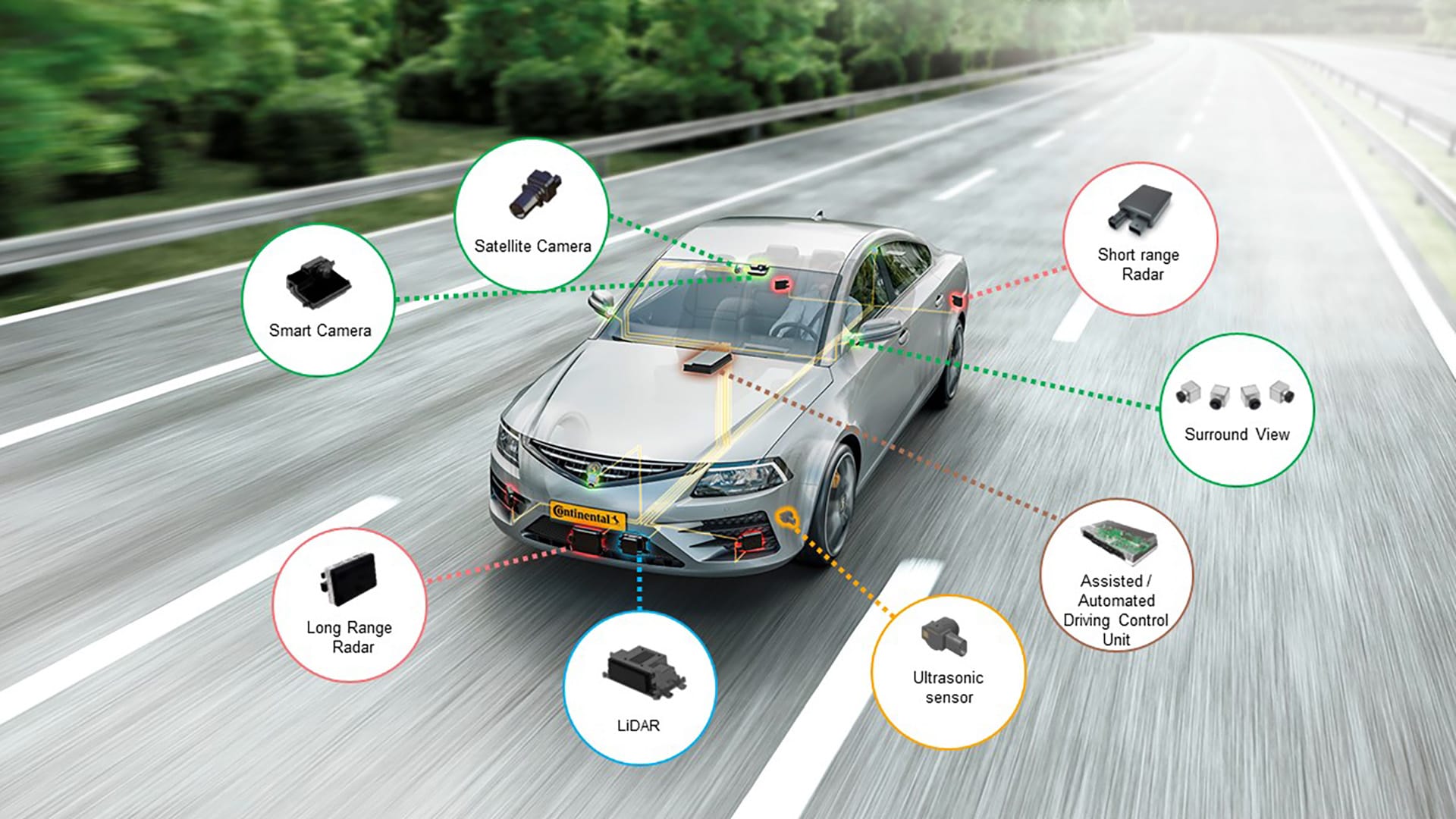ADAS
Advanced Driver Assistance Systems
Advanced Driver Assistance Systems are the key enablers of tomorrow‘s autonomous vehicles. Already today, ADAS technologies enable a high level of driving comfort and crash avoidance via features like Adaptive Cruise Control and Emergency Brake Assist.
ADAS Sensors and Computing Hardware for 360° perception
Radar, Camera & Lidar technologies enable a highly robust 360°-degree view around the vehicle – a precondition to realize advanced driving functions.
CES has access to the latest sensor portfolio for integration into your vehicle:
- Long Range Radars, e.g., for features like Emergency Brake Assist and Adaptive Cruise Control
- Short-Range-Radars e.g., for features like Blind-Spot-Detection, Rear- Cross-Traffic-Alert and Lane-Change-Assist
- Front-Cameras e.g., for Lane-Support-Functions and Speed-Limit-Assist
- Driver Monitoring Cameras e.g., for driver availability monitoring
- Satellite-Cameras e.g., for 3D-Surround-View and Mirror Replacement
- Automated Driving Control Units to host functions that require complex sensor fusion, e.g., Traffic-Jam-Assist, Highway Assist and advanced hands – off-features
ADAS Features for Safety & Comfort
Based on the available sensor setup, ADAS features contribute to traffic safety and relieve the driver of strenuous driving tasks. CES offers turn-key integration of state-of-the-art ADAS features into your vehicle, including:

Adaptive Cruise Control Stop & Go
The ACC system behaves as a conventional cruise control system in an open lane condition. When approaching a slower vehicle in the subject vehicle path, the ACC system uses the Powertrain and the Electronic Brake System to adjust the subject vehicle speed in order to maintain the driver-selected headway. Including ACC Stop&Go, Reaction on static objects, Auto Go, External Speed Assist Input.

Emergency Brake Assist
The EBA system is designed to avoid accidents by means of driver visual/audible alert as well as automatic partial and full braking. The EBA function may cascade various warning and braking stages as well as various levels of deceleration.

Blind Spot Detection
The Blind Spot Detection (BSD) system monitors the area "blind spot area" and takes much of the strain off the driver and avoids hazardous situations. Sensors monitor the road area behind and next to your own vehicle and warns if you try to pull out despite there being no gap.

(Rear-)-Cross-Traffic Alert
The Rear Cross Traffic Alert (RCTA) system uses the same radar infrastructure for detecting vehicles in the blind spot (Blind Spot Detection, BSD) and can help to avoid accidents when reversing out of a parking space. These can often lead to serious accidents involving injuries.

3D-Surround View
Surround View was originally designed to give the driver new and previously unobtainable viewpoints of their vehicle, using typically 4 cameras and an ECU. These viewpoints benefit the driver in multiple scenarios; ranging from checking your blind-spot when changing lanes on the motorway to pulling off a parallel park without grinding the wheels.

Traffic Jam Assist
Traffic Jam Assist combines a full-speed range Adaptive Cruise Control system with Auto-Go capability, together with a full-speed Lane Keeping Assist system. The driving path may also be defined by the trajectory of the preceding vehicle under certain circumstances such as low-speed, dense traffic situations, and missing lane markers. The extended variant of the system will also be able to assist the driver in construction sites with reduced lateral space.

Traffic-Sign-Assist (TSA) and Speed-Limit-Assist (SLA)
Traffic Sign Assist ensures that the current speed limit and other road signs are displayed to the driver on an ongoing basis. Automatic recognition functions via a link between images captured by a camera and the speed limit information stored in the navigation system. In this way, even speed limits that are not explicitly visible, like within a city, will be displayed to the driver. It includes the detection of conditional speed limits by Supplementary Sign Optical Character Reading. Optionally, SLA can be extended to an Intelligent Speed Assist (ISA) by adapting the cruise control with speed limit information from traffic sign recognition.

Lane Keeping Assist Systems
The Lane Keeping Assist system proactively supports the driver by keeping the vehicle in the center of the lane within a full speed range. The system aims to increase comfort by supporting the driver with their lateral control tasks. It requires the driver to keep their hands on the steering wheel. The LKA system can be coupled with adaptive cruise control (ACC) to support both longitudinal and lateral control at the same time. The system can be easily overruled by the driver at any time.
ADAS on the way to Automated Driving
With the transition from highly-automated, but still driver-supervised driving (L2) to partly autonomous driving (L3-L4), important technology barriers must be overcome.
CES provides all required products and services to help you on that journey, e.g.
- Sensor Fusion & Environmental Modeling
- Test Engineering for Autonomous Driving
- High-Power Safety Computing Units (ADCU) for Autonomous Driving
DIRECT CONTACT
Yannick Frisoni
Senior Business Development Manager
Driver Assistance & Autonomous Driving Segment
Tel: +33 (0)6 1895 6102
Email: yannick.frisoni@conti-engineering.com
Tel: +33 (0)6 1895 6102
Email: yannick.frisoni@conti-engineering.com


